
Enti, Associazioni e portatori di interesse: tutti intorno ad un tavolo per parlare del suolo, del suo consumo e della proposta di legge per la sua tutela. Ecco i contributi dell’incontro che si è svolto il 18 luglio scorso al Padiglione Italia di EXPO2015.
“Perché un evento sul consumo di suolo ad EXPO? Fare un evento sul consumo di suolo all’EXPO di Milano sembra quasi una contraddizione. Proprio per questo potrebbe invece essere il luogo metaforicamente adatto in cui affrontare in modo aperto e approfondito questo tema così complesso. Lo fermo nella tavola rotonda organizzata il 18 luglio. E adesso vi spieghiamo perché”. Inizia così il resoconto dell’incontro pubblicato sul sito Cnrconsumo suolo di cui riportiamo i principali contenuti. nel resoconto sono disponibili gli interventi degli esperti che hanno preso parte al dibattito. Schegge di dialogo al link #Consumodisuolo.
Consigliamo inoltre la visione di Let’s Talk About Soil – Italiano e degli altri video sull’evento pubblicati alla pagina Consumo Suolo CNR Expo2015.
Milano 18 luglio 2015 – Da dove siamo partiti…
Tra le molte attività che IBIMET Istituto di Biometeorologia e ISAFOM Istituto per i Sistemi agricoli e Forestali del Mediterraneo (organizzatori dell’evento) hanno in essere, lo studio degli usi del suolo riveste particolare importanza metodologica e sperimentale. Oggi ancor di più in prossimità della possibile emanazione di una legge sul consumo del suolo. L’interesse per la struttura di questa legge, le potenziali implicazioni sugli usi, e in particolare la ricaduta che questa legge avrà in termini di ricerca e conoscenza non potevano non attirare l’attenzione del Consiglio Nazionale delle Ricerche. Attenzione che ha fatto nascere la necessità di un’ampia discussione con tutti i portatori di interesse così da meglio organizzare, e focalizzare, le capacità di indagine su questo fenomeno che coinvolge settori molti ampi di studio e di intervento infrastrutturale.
Alcune questioni sono per noi fondamentali…
E’ fondamentale che come CNR si discuta, assieme agli esperti che interverranno alla tavola rotonda, del tema chiave della misurabilità dei processi: misurabilità del consumo, misurabilità degli interventi, misurabilità delle situazioni ex-ante ed ex-post così da comprendere i cambiamenti del territorio. Sono questioni molto complesse che necessiteranno di risposte adeguate, da parte del mondo della ricerca in primis. E’ fondamentale promuovere un approccio multidisciplinare. Affrontiamo la questione essendo ben consapevoli che il tema del consumo di suolo spazia dalle problematiche del paesaggio, a quelle dell’urbanistica sostenibile, a quella delle normative di piano, senza dimenticare la necessità di una definizione di suolo che comprenda le sue proprietà fondamentali. Perché il suolo non è mera superficie. Il suolo è molto di più. E’ fondamentale il confronto. Confrontarsi innanzitutto su questa proposta di legge che nei fatti inciderà sull’utilizzo del suolo attraverso un insieme di articoli che ne dettaglieranno le modalità, e che inevitabilmente apriranno discussioni in merito ad una economia del suolo, alle trasformazioni storiche, alle relazioni sociali sulle quali la legge opererà.
Esercitazione
Presentazione e utilizzo piattaforma SOILCONSWEB, strumento webgis che contiene numerosi strati informativi spaziali di alta qualità relativi al suolo e al paesaggio. Tale strumento è reso accessibile attraverso il web mediante un normale collegamento ad internet. Accedendo al sistema si ottengono consulenze che permettono agli utenti, utilizzando calibrati strumenti di analisi (tools), di produrre documenti, relazioni e mappe su importanti tematiche relative all’agricoltura e all’ambiente.
I coordinatori dell’evento sono stati Teodoro Georgiadis (CNR-IBIMET) e Angelo Basile (CNR-ISAFOM)
Relatori e interventi
Angelo Basile – Consumo di suolo e perdita di funzioni: come si valuta e con quali strumenti?
Paolo Pileri – Le dinamiche strutturali del consumo di suolo e le nostre responsabilità.
Franco Salvatori – Le ragioni storiche del consumo – analisi dei perché della differenziazione del consumo di suolo in Italia
Donatella Diolaiti – La qualità della vita urbana: prove tecniche di teorie e tecniche di rinascimento della città.
Samuele Segoni – Stop al Consumo di Suolo: 9 proposte.
Autori Invitati
Marco Morabito – Aspetti climatici urbani del Consumo di Suolo
Michele Munafò – Porre un freno al consumo di suolo
Stefano Sabatini e Alessio Biancalana – Strumenti di dialogo su temi ambientali e non: il grande potenziale dei dati geografici liberi e partecipativi di OpenstreetMap.
Daniele Vergari – Consumo del suolo e agricoltura: appunti per una nuova prospettiva
Letizia Cremonini – Paesaggio ed economia: il senso del luogo e l’analisi dei costi nei processi progettuali
Gruppo Suolo Europa del Forum Salviamo il Paesaggio e Difendiamo i Territori- Su come i pedologi debbano tornare attori primari nella salvaguardia della risorsa suolo
Dati
E’ stata organizzata un estrazione dei dati ispra a livello comunali usando una delimitazione proposta dalla comunità di mappatori libera italiana disponibile presso il sito: Estratti italiani OpenStreetMap per dati liberi urbani.
Grazie alla disponibilità OpenData dei dati di dettaglio di consumo suolo in italia sono stati forniti Dati ISPRA Consumo di suolo a livello comunale Anno 2012 Proiezione Geografica WGS84 con il codice per la riproduvibilità estrazione Codice R di per la generazione delle Mappe. E’ stato abilitato in collaborazione con DISIT Università di Firenze un canale di twitter Vigilance Valentina Grasso – Twitter Vigilance Canale “Consumo di suolo” .
In sintesi …
Per noi l’evento organizzato ad Expo oltre ad essere un’occasione per mostrare alcune metodologie sviluppate da ISAFOM per la gestione del territorio e del suolo, vorremmo che fosse un incontro aperto a quanti hanno a cuore questo tema. Noi speriamo che diventi un’occasione in cui, insieme agli esperti e agli attori coinvolti, si possano meglio comprendere le dinamiche tecniche che la nuova legge ci imporrà di gestire. Vorremmo che la tavola rotonda fosse uno spazio per ascoltare e supportare le diverse istanze e dinamiche sociali che scaturiranno dalla legge e che i portatori di interesse sono vivamente invitati a venire ad esporre durante l’evento.
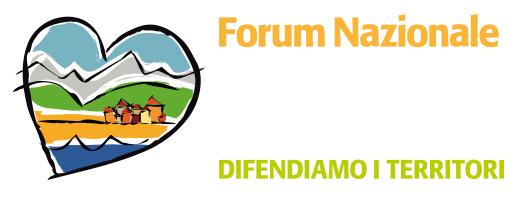
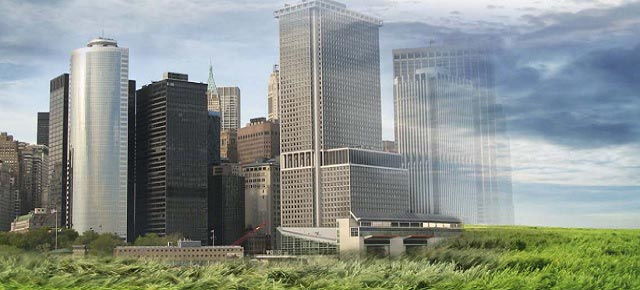


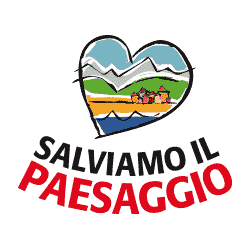 FORUM ITALIANO DEI MOVIMENTI PER LA TERRA E IL PAESAGGIO
FORUM ITALIANO DEI MOVIMENTI PER LA TERRA E IL PAESAGGIO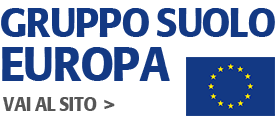

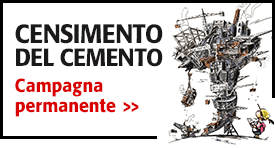
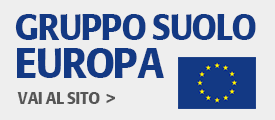
ABSTRACT X EVENTO 6.5.15-MILANO:The author argues that to frame the topic planning tools for an efficient planning of agricultural areas need to take as the first obiettvo general objective defined in the Millennium Development Goals as the eradication of extreme poverty and hunger, and particularly urban poverty. In this regard, by the same information in 2014 report on MDG’s shows that, although globally the high-end has halved poverty in the decade 1990-2010, has consistently increased the number of population living in the worst conditions of urban slums.
At the same time increased the levels of extreme poverty in the Western world and widened the gap between high income levels and the minimum, particularly in urban centres. The global partnership on development, emerged after the Conference on sustainable development in Rio + 20, and in particular, given the partial results of the High Level Political Forum on sustainable development, should define the main objectives after the revision of MDG’s sustainability of urban settlements and agriculture.
Food insecurity coupled with growing poverty has imposed in the debate, for now without adequate political tools and applications-at least in Italy[1], the issue of containment of soil consumption. The soil, because non-renewable resource and high ecological value, must join between indicators of a new schedule that would rebalance the value gap between the urban and the rural. This will result in an urgent revision of the planning tools to the application tiers.
Effects on urban planning begin to look first of all between the small virtuous community, coordinated in various networks and movements. More recently, even the most important cities are trying to act on approved plans years ago in typical regulations in areas with varying regulations that allow you to unlock at least the regions defined in the Green vincolistica conception to say them as agricultural areas. It offers the case of Turin which specimen of the abstractness of the prescriptive planning indifferent to overwhelming social transformation that had displaced populations also engaged in agriculture to industrial and urban centers and that now, given the social crisis, economic and environmental, proves to be inconsistent. The people of Turin today does not exceed 900,000 inhabitants, while the PRG approved in 1995 forecasted about 2 million. The author argues on scientific inadequacy that baseline, as in General on the predictions of most PRG also drafted during the years in which the Habitat agenda indicated a different modus operandi for the sustainability of human settlements.
It describes on the other hand, the slowness of decretazione at European level and of the deliberations at the national level to ensure the Italian containment of soil consumption, while Italian level a further complication in planning outcomes will achieve the approval of recent statutes the Constitution of metropolitan areas, from 1.1.2015 entered into force.
Ends, not denying the positive aspects of the new regulatory framework in place and approved, but considering and making assessments of their Forum on the Salvation of the landscape that it is no longer enough to involve specialists, researchers, academics. To act and move the political decision-making level/needs the direct participation of citizens and their associations, including local and regional authorities to their direct contact. In this sense, the European Commission and other istituziuoni must find the “courage” to listen to all the populations victims of avalanches, landslides, floods, loss of agricultural production, fertility, pollution reduction.
Because the soil is actually taken into consideration it is established a Global and European Soil Partnership (ESP), which seeks to coordinate and assume the authority to impose or unified voice initiative self-attribution. Carefully follow this process will probably hasten even decisions to be taken at national level.
________________________________________
[1] After a year of debate, the environment and Agriculture Committees of the room are recently arrived at a new basic text adopted by the committees gathered VIII and XIII on 20 JANUARY 2015
The author argues that to frame the topic planning tools for an efficient planning of agricultural areas need to take as the first obiettvo general objective defined in the Millennium Development Goals as the eradication of extreme poverty and hunger, and particularly urban poverty. In this regard, by the same information in 2014 report on MDG’s shows that, although globally the high-end has halved poverty in the decade 1990-2010, has consistently increased the number of population living in the worst conditions of urban slums.
At the same time increased the levels of extreme poverty in the Western world and widened the gap between high income levels and the minimum, particularly in urban centres. The global partnership on development, emerged after the Conference on sustainable development in Rio + 20, and in particular, given the partial results of the High Level Political Forum on sustainable development, should define the main objectives after the revision of MDG’s sustainability of urban settlements and agriculture.
Food insecurity coupled with growing poverty has imposed in the debate, for now without adequate political tools and applications-at least in Italy[1], the issue of containment of soil consumption. The soil, because non-renewable resource and high ecological value, must join between indicators of a new schedule that would rebalance the value gap between the urban and the rural. This will result in an urgent revision of the planning tools to the application tiers.
Effects on urban planning begin to look first of all between the small virtuous community, coordinated in various networks and movements. More recently, even the most important cities are trying to act on approved plans years ago in typical regulations in areas with varying regulations that allow you to unlock at least the regions defined in the Green vincolistica conception to say them as agricultural areas. It offers the case of Turin which specimen of the abstractness of the prescriptive planning indifferent to overwhelming social transformation that had displaced populations also engaged in agriculture to industrial and urban centers and that now, given the social crisis, economic and environmental, proves to be inconsistent. The people of Turin today does not exceed 900,000 inhabitants, while the PRG approved in 1995 forecasted about 2 million. The author argues on scientific inadequacy that baseline, as in General on the predictions of most PRG also drafted during the years in which the Habitat agenda indicated a different modus operandi for the sustainability of human settlements.
It describes on the other hand, the slowness of decretazione at European level and of the deliberations at the national level to ensure the Italian containment of soil consumption, while Italian level a further complication in planning outcomes will achieve the approval of recent statutes the Constitution of metropolitan areas, from 1.1.2015 entered into force.
Ends, not denying the positive aspects of the new regulatory framework in place and approved, but considering and making assessments of their Forum on the Salvation of the landscape that it is no longer enough to involve specialists, researchers, academics. To act and move the political decision-making level/needs the direct participation of citizens and their associations, including local and regional authorities to their direct contact. In this sense, the European Commission and other istituziuoni must find the “courage” to listen to all the populations victims of avalanches, landslides, floods, loss of agricultural production, fertility, pollution reduction.
Because the soil is actually taken into consideration it is established a Global and European Soil Partnership (ESP), which seeks to coordinate and assume the authority to impose or unified voice initiative self-attribution. Carefully follow this process will probably hasten even decisions to be taken at national level.
________________________________________
[1] After a year of debate, the environment and Agriculture Committees of the room are recently arrived at a new basic text adopted by the committees gathered VIII and XIII on 20 JANUARY 2015